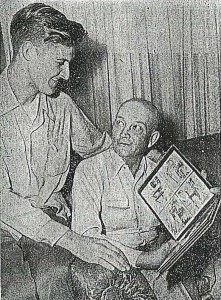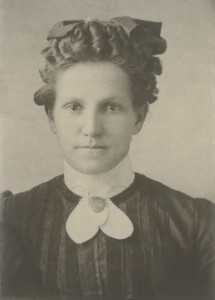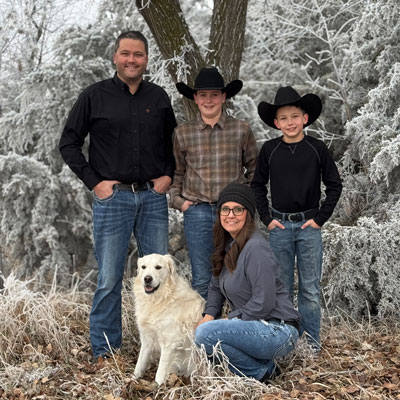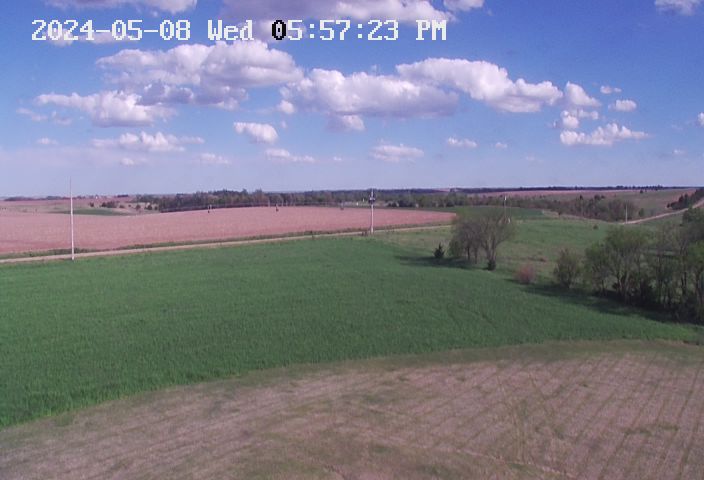Source:
The National Archives
Korean War Data File of American Prisoners of War, 1950 – 1953
Link to Record
Gibson
“Seeing Yanks Outdo MIG’s Helped Lot”, Ex-POW Says

Jacque Jeffords, 24 year old Mullen, Neb. repatriated prisoner of war, was in Omaha Thursday making up for lost time and planning for the future.
Young Jeffords returned to his hometown and a hero’s welcome August 30 after 32 months in North Korean prisoner of war camps.
He was captured November, 11, 1950 after three days of hiking toward American lines. His B-26 was shot down in Communist territory.
“I almost made it,” he said, explaining that he was within 20 miles of the lines when a North Korean patrol found him hiding in the mountains.
The weeks that followed were a haze of interrogating sessions for the then 21 year old Air Force corporal. The Commies shifted him from place to place, shooting questions hour after hour.
“They didn’t learn anything,” he said. He added that he did not see a Russian interrogator throughout his imprisonments.
Most of his internment was in Camp 3 a few miles from the Yalu River on on North Korean soil. The locale was “right under” MIG Alley.
That fact, he said, kept prisoner morale at a peak.
“We always watched the dogfights,” he laughed, “and I never saw an American plane turn tail from the MIG’s.” He said that was the favorite tactic of MIG pilots.
“They always turned and headed for the Yalu. Our pilots would follow. We could see the tracers from their guns. Then when it looked like they were going to score a kill they would have to turn around. That was awful to see.”
The son of a retired rancher, young Jeffords wasn’t inclined to dwell on the treatment.
“We all got a share of brainwashing. On some–very few–it worked. Most of us laughed at them. We did anything to miss the classes, but they managed to round us up–just like cattle.”
The former prisoner said he knew, “quite a few of the men who went over to communism.” Was it due to a lack of education?
“Some of them had college degrees, others hadn’t gotten through the fifth grade. Some day they’ll realize what they’ve done,” he observed.
His future, he revealed, is clear cut. He will re-enlist in the Air Force.
“I can’t think of anything I’d rather do than serve my country. Perhaps it will help to keep others from being Communist prisoners.”
En route to visit relatives in Des Moines, Ia., young Jeffords and his father, John Jeffords, stopped to visit friends here, Mr. and Mrs. Loyal Cohn, 5107 Dodge Street.
Source:
Omaha World Herald
October 29, 1953
Minnie Myrtle Stubbs Picture
Eclipse Church
In the early part of this century a great need was eventually felt for a church building at Eclipse Cemetery, especially since there were so many funerals and the distance to travel was so great. The various Tucker families were most gracious to lend the use of their home to those in sorrow, but still it was a distance to their place, and was a hardship in frigid weather.
Once a group of people built a little sod house for church purposes on the ranch of Judd Gragg, but money with which to pay a minster could not be raised, and before long the little undedicated building was being used as a granary by Mr. Gragg. So it too, did not fill the need for a community building.
Eventually there was money enough to build a church building, enough to match that coming from the Episcopal Church, and in 1916 the building was constructed. The Reverend George Ware was one of the the most encouraging forces behind it. In 1918 the church was dedicated, and in 1978, they celebrated their sixty year anniversary as an Episcopal Church.
After the erection of the church, Bishop Beecher made the trip to All Saints Church to hold Memorial Day service almost every year. Later the Rt. Reverend Howard R. Brinker. D.D. carried on the tradition.
The women of All Saints Guild was organized in 1910 with Mrs. A.J. gragg first president; Mrs. Placer Tucker, Treasurer; and Mrs. Thomas Quinn, Secretary. A few years after that the Helping Hand Community Club came into the picture. Both worked for the upkeep of cemetery and church.
On November 1, 1981, the Eclipse Church resumed regular church services as a non-denominational organization. We were blessed with John Gale as our first minister. he and his family came to use from Tryon for nine months and we were deeply saddened to lose them.
We continued having regular church services with the help of many wonderful guest speakers. During this three month interval we also began working on our badly deteriorated church walls. Dave Christensen did the carpenter work, which was quite a challenge with no electricity. The work was completed within a two week interval and we were so pleased to have John Gale and his family back to help us celebrate the completion.
On November 21, 1981, we were again blessed with a wonderful minister from the Arthur Baptist Church, Paul Kondy is still with us as we hope he will continue to be for a very long time.
As far as we know, there have been only two wedding in the church. The first was November 3, 1956 with Don Bullington and Bonnie Connell. Milt Seson and Laura (Davis) Sedlacek were married on January 28,1984.
With God’s help we know that our little country church will continue to grow and be a wonderful service to our fine community.
Source:
McPherson County: Facts, Families, Fiction
Published 1986
Page 115
Eclipse Cemetery
The following is written from an article by Mrs. Mabel Quinn who had corresponded with Mrs. Thomas P. Wood, Cressage, England. Mrs. Wood was the former Elvira (Vira) Tucker.
On a very hot July day in 1890, a man, woman and little baby drove into Tucker’s from the east, in a covered wagon. They asked for milk for the baby and a meal for themselves. The three month old baby was very ill with dysentery, and had been very badly neglected. Mrs. Tucker bathed the little girl in an effort to abate her fever.
The man and woman claimed that the baby’s mother had died and the woman was a sister of the man. They insisted that Mrs. Tucker keep the baby for awhile as they had no way to keep milk for it, as they traveled to Whitman. Mrs. Tucker had four little children and would soon have another. She felt she must decline but suggested they go see the Dave Edwards family who lived a half mile down the Dismal River on the Grant Keith homestead. They consented to keep the baby and the father agreed to return for it the first rainy day they could get time off from his hayfield job near Whitman. They never returned and nothing more was heard from them. They had given a false employer’s name and the address was fake as well.
The little girl had seemed to be getting stronger and nearly well when suddenly a few weeks later she fell into convulsions and died.
There was no cemetery near. Mr. Tucker made a little pine coffin. Mr. Edwards dug a grave on the northwest corner of Mr. Tucker’s tree claim, located thirty miles southwest of Mullen, Nebraska in Hooker County and the little unknown baby was laid to rest. Mr Tucker put a barbed wire fence around the grave. Some time later the Edwards lost a baby and soon after so did the Tyrrels, neighbors of the Edwards to the east.
Mr. Tucker eventually fenced a plot of land and said he wanted it used for a community cemetery. After the post office was established in the Tucker home and name Eclipse, the cemetery became known as “Eclipse Cemetery”.
Funerals were usually held at the home if a minster could be found but most time only a hymn was sung by the group of gathering neighbors and friends and the Lord’s Prayer said in unison at the gravesite. In summer, prairie flowers were gathered and used and in winter the flowers from the house plants that every pioneer mother grew in her sod house windows were offered. There was no embalming of a body, no telephone over which to call a doctor if one could be found. Many a saddle horse made its last trip whose rider was endeavoring to get a doctor “in time” or to order a casket from Alliance or Broken Bow. Baptism was often administered by Mrs. N.L. Reuter.
The Tucker’s hospitality was always extended to the funeral parties and the women of the community always brought food and prepared a meal for their comfort. The men dug the grave and acted as pallbearers. In bad weather, the trip to the cemetery was made one day and the burial the next.
Of the many “who have come to make their bed” are those of diverse faiths, Mormons, Roman Catholics and almost any Protestant denomination one can mention.
Source:
McPherson County: Facts, Families, Fiction
Published 1986
Page 131


